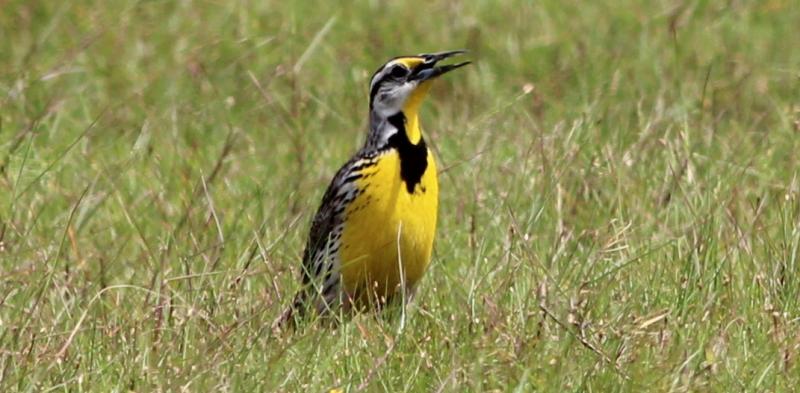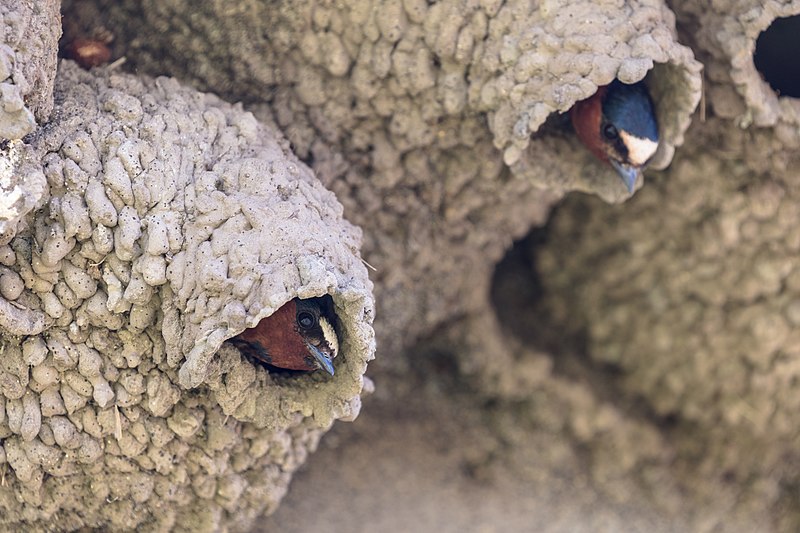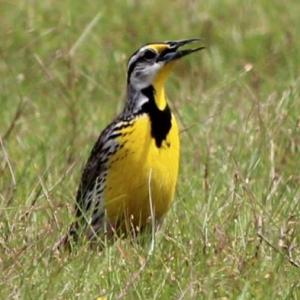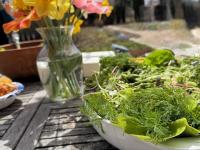The Bird Economy
 Species like the eastern meadowlark that use grassland habitats are, as a group, showing bigger declines than others. Courtesy of Gary Leavens
Species like the eastern meadowlark that use grassland habitats are, as a group, showing bigger declines than others. Courtesy of Gary Leavens
 Cliff swallows were a common site in Midcoast Maine up until a few decades ago. Now, they’re all but gone as breeding birds. Courtesy of Yellowstone National Park
Cliff swallows were a common site in Midcoast Maine up until a few decades ago. Now, they’re all but gone as breeding birds. Courtesy of Yellowstone National Park
 Species like the eastern meadowlark that use grassland habitats are, as a group, showing bigger declines than others. Courtesy of Gary Leavens
Species like the eastern meadowlark that use grassland habitats are, as a group, showing bigger declines than others. Courtesy of Gary Leavens
 Cliff swallows were a common site in Midcoast Maine up until a few decades ago. Now, they’re all but gone as breeding birds. Courtesy of Yellowstone National Park
Cliff swallows were a common site in Midcoast Maine up until a few decades ago. Now, they’re all but gone as breeding birds. Courtesy of Yellowstone National Park
The economy is in the news every day as the countdown to the presidential election is underway for real. Inflation, interest rates, GDP, stock indices, bond returns – the numbers of ways economists (and politicians!) assess the health of the economy or parts thereof is dizzying!
But what about the “bird economy?”
We’re often asked by people, “How are the birds doing?” There are as many ways of answering that question as there are ways to answer the question of how the economy is doing.
Many people have heard the statistic about how there are nearly three billion fewer breeding birds in the U.S. and Canada as compared to 1970. We’re not economists but perhaps that stat is the equivalent of a nation’s Gross Domestic Product (GDP). A drop that large in the total number of birds in the U.S. and Canada is just as alarming as would be a massive drop in a country’s GDP.
Thankfully, not all populations of all bird species are in decline. Those of us who have been around a few years know that there are many more wild turkeys, tufted titmice, and northern cardinals here in Maine than there were in the 1970s. Sometimes it seems we see a bald eagle every time we step outside. A few decades ago, we would have had to have gone on a dedicated search to locate one. And there are many other examples of bird species that are on the rise.
In fact, analyses of the results of Breeding Bird Surveys—the best methodology that’s been available to assess trends in breeding birds—show that there were at least 27 species that showed a statistically significant increase in numbers since 1966. This includes pine warbler, mourning dove, mallard, osprey, and eastern bluebird—birds we all love to see.
Unfortunately, the flip side is that more than twice as many species (62) have shown a significant decrease in numbers over that same time period. How many of you remember the hordes of cliff swallows that used to nest under the eaves of barns and other buildings across Maine’s Midcoast region at least through the 1980s? We’ll bet you haven’t seen one nesting in the area in years.
Many’s the street or hill that still bears the name “whip-poor-will,” yet the species is unlikely to have been heard in most of those locations for decades. Even birds that we continue to take for granted, like barn swallow, great black-backed gull, and herring gull, have shown major declines in numbers.
Just as financial analysts look at different stock market indicators—S & P 500, Dow Jones, Nasdaq—we can group bird species by different characteristics to try to better understand the trends in the bird economy. Birds that breed in grasslands and scrublands are among the groups in which the highest proportion of species are declining. Eastern meadowlarks, bobolinks, brown thrashers, and field sparrows are getting harder and harder to find. Bird species that catch insects in the air (formally known as aerial insectivores and include swallows, flycatchers, nightjars, and chimney swifts), are also one of the groups with the most declining species. And while more than 50% of forest-inhabiting birds in Maine are also declining, that percentage is much lower than in grassland and scrubland bird species and the aerial insectivores.
So how are the birds doing? As we’ve skimmed over a few ways to assess the “bird economy,” you can see that there are many intricacies to answering the question. The overall trend, though, is that more bird populations are declining than increasing. That’s not a positive indicator for the birds and the environment that we all depend on for our lives.
Maybe it’s time to take into consideration the state of the bird economy as we evaluate our options for our elected leaders. A healthy economic is important, and so is a strong “bird economy” if we want a healthy environment, healthy communities, and healthy people.
Jeffrey V. Wells, Ph.D., is a Fellow of the Cornell Lab of Ornithology and Vice President of Boreal Conservation for National Audubon. Dr. Wells is one of the nation's leading bird experts and conservation biologists. He is a coauthor of the seminal “Birds of Maine” book and author of the “Birder’s Conservation Handbook.” His grandfather, the late John Chase, was a columnist for the Boothbay Register for many years. Allison Childs Wells, formerly of the Cornell Lab of Ornithology, is a senior director at the Natural Resources Council of Maine, a nonprofit membership organization working statewide to protect the nature of Maine. Both are widely published natural history writers and are the authors of the popular books, “Maine’s Favorite Birds” (Tilbury House) and “Birds of Aruba, Bonaire, and Curaçao: A Site and Field Guide,” (Cornell University Press).
























